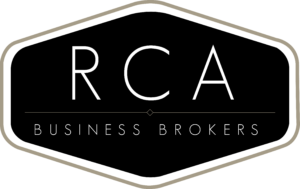
UNDERSTANDING LEASEBACKS
18/12/2017 by Rod Askew – RCA Business Brokers
The popularity of leasebacks in management rights comes and goes.
If you were to ask a motelier what he prefers, a long term lease or PAMDA’s with a 30 day termination clause, he will take the long term lease every time.
The argument from many management rights owners is they don’t want the liability of lease rents hanging over their heads.
So why the difference of opinions and what are the options?
Over the years we have done quite a lot of business with the Quest Apartments group.
Now while they have typical management rights businesses in their franchise group, their much preferred model is always to have a head lease over all of the units with a set rental on those units. Now bearing in mind Quest have approximately 140 apartment businesses in their group, they should know a thing or two on the advantages and pitfalls of the system.
They trade the liability of the rent for the security of never losing units from their letting pool. Of course in each case the rent is determined by unit size, number of bedrooms, the location of the complex and the age.
Now a management rights owner will tell you that a good manager doesn’t lose units from their letting pool as long as they are doing their job properly.
So where are the advantages of leasebacks in a management rights?
Well if you are in a strictly permanent letting business, I would say there aren’t any advantages.
You rent units, collect the rent, take your 7.5% commission and hand the balance over to the unit owner. No room for a leaseback in that model.
On the Gold Coast, Sunshine Coast and in Far North Queensland where occupancies and tariffs haven’t exactly been hitting record highs in the last couple of years, there is an inherent risk with leasebacks as there are low points when the set rental may not be reached and as a result the shortfall in rent would need to be met by the manager.
Now let’s travel north to Brisbane, Gladstone and Mackay where long term rents are in demand and occupancies in corporate let buildings have been up in the high 80% and 90% range.
A manager in a corporate let building in these cities where demand for accommodation is very high would be adversely affected by units coming in and out of the letting pool and that can create serious issues where a manager has bookings for those units.
How then can a manager be certain of having the unit stock available for his corporate let business? The answer can be leasebacks.
To ascertain the leaseback rental we need to look at a number of points.
Firstly, what does the unit owner need out of this?
Most unit investors have a mortgage and have purchased their investment as a means of long term savings or superannuation.
They are looking for their investment to not cost them anything above what it is earning and effectively pay itself off. Usually that magical figure is approximately the permanent rental figure for the region or city they have invested in if their advisors have done their job properly.
The last thing an investor wants is periods where they have no tenant in their unit and they then need to put their hand in their pockets and top up the mortgage payment out of their weekly job earnings.
To approach these investors with an offer of guaranteed rent at market levels for 52 weeks a year can be an attractive proposition gratefully received.
By way of an annexure to a traditional PAMD20a stating the manager will pay the agreed rental for the 52 weeks less his normal 7.5% commission and that the manager will be offering the unit on a short term letting basis and is entitled to any monies over and above the agreed fixed rental, the manager can do far better financially than simply sticking in a tenant and collecting the 7. 5% or 8% commission.
This method or arrangement is referred to as “performance undertaking”, where a manager backs himself to achieve a better result in that unit than just a long term tenant arrangement. As the arrangement is conducted on a typical PAMD20a and the unit owner is still deemed to be the supplier, there is no gst applicable on the overnight tariffs therefore keeping you competitive with hotel rooms in the area..
The issue arises who will furnish the unit for short term rental. Quite often the manager will arrange for the furniture or if an owner is agreeable to a slightly higher weekly rental and have the financial capacity to do so, they will furnish their own unit and claim the depreciation benefits as well.
Keep in mind this arrangement only works in cities where short term accommodation is in great demand and there is a shortage of such accommodation.
This arrangement doesn’t suit every manager and many will say, “Why would we want to enter such an arrangement”?
The most obvious answer is Money or profit.
Typically a manager will make between $1500 to $3000 per unit per annum profit from a long term rental unit.
A holiday unit on the Gold or Sunshine Coast under a typical PAMD20a arrangement can make a profit between $4000 and $8000 per annum per unit, depending on age and location of the complex.
In Brisbane a unit under a “performance undertaking” or leaseback arrangement can make as much a $12,000 to $15,000 profit for a manager per annum.
There is no better example of this than our property of the month, “Toowong Central” which has leases on each unit and returns a staggering $25,000 profit per unit per annum.
Regards
RCA Business Brokers Team



